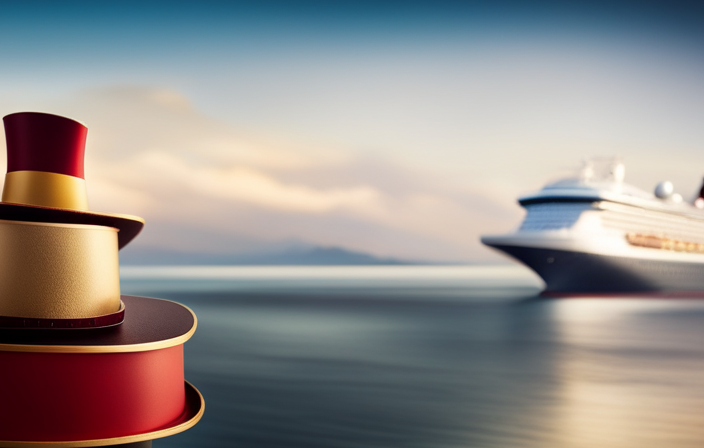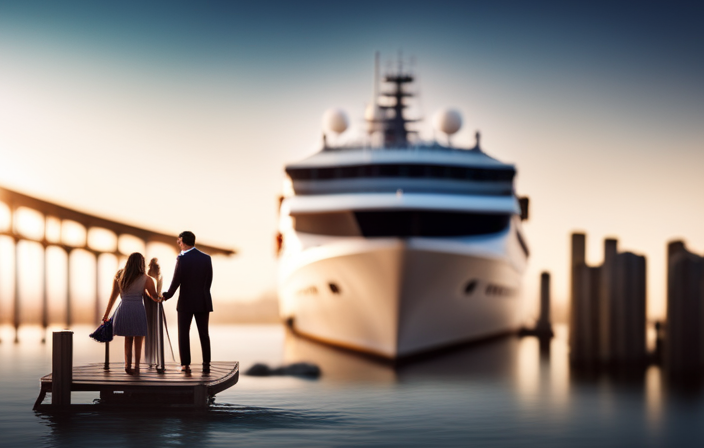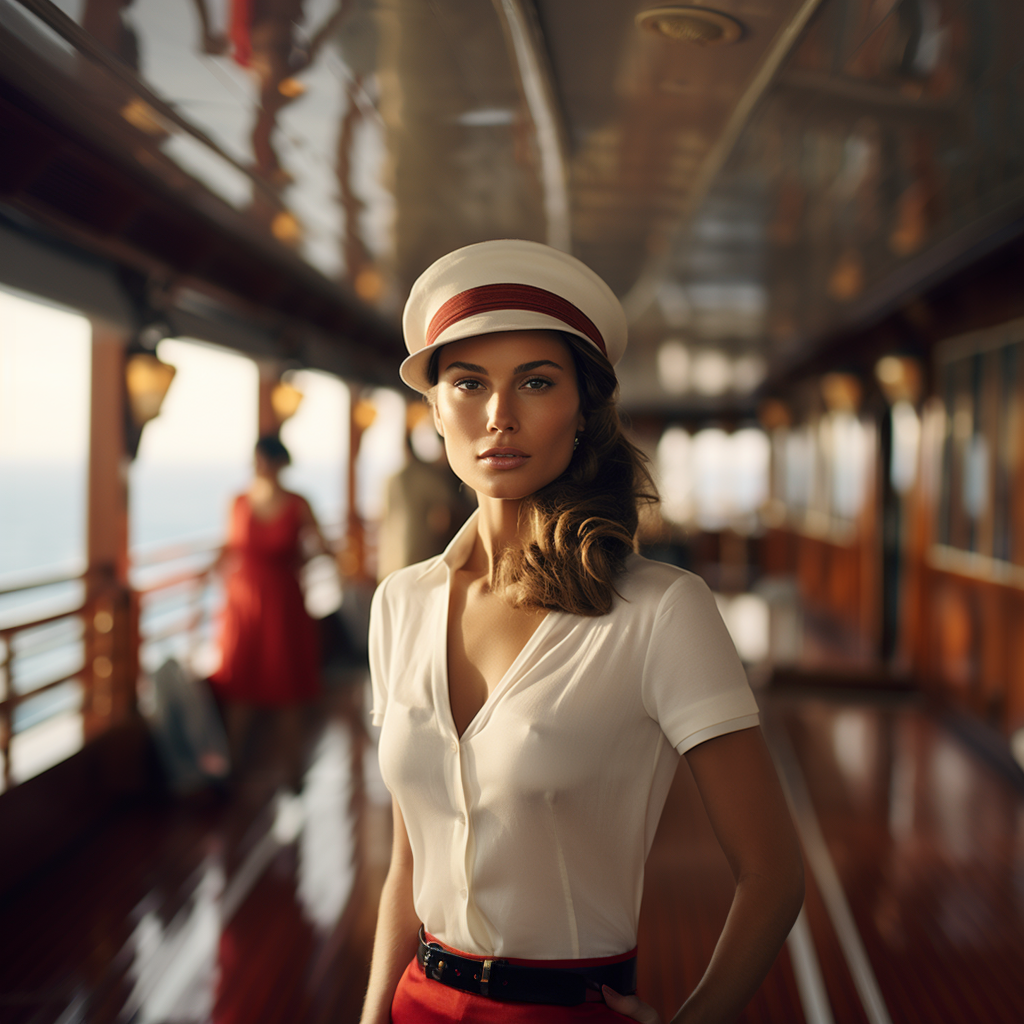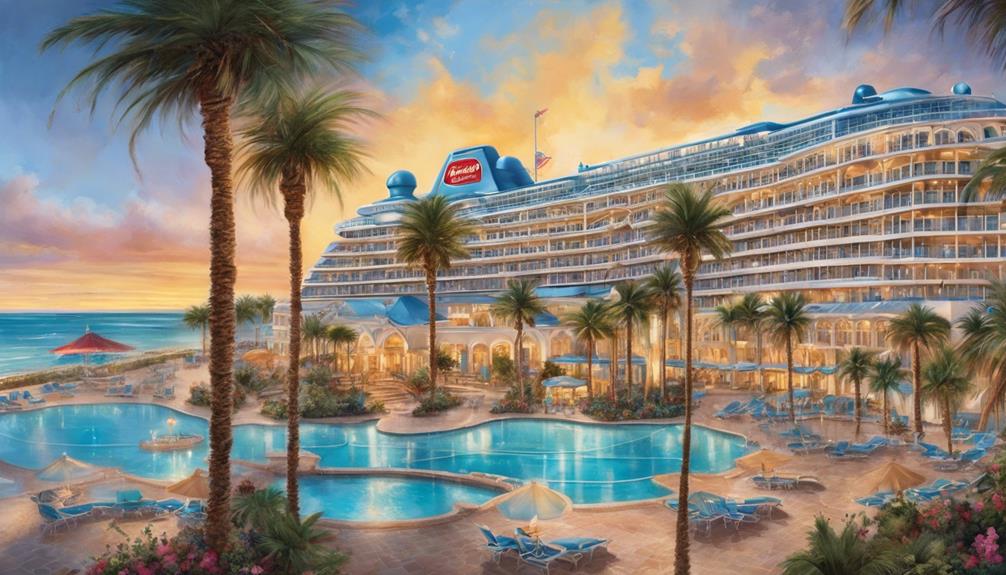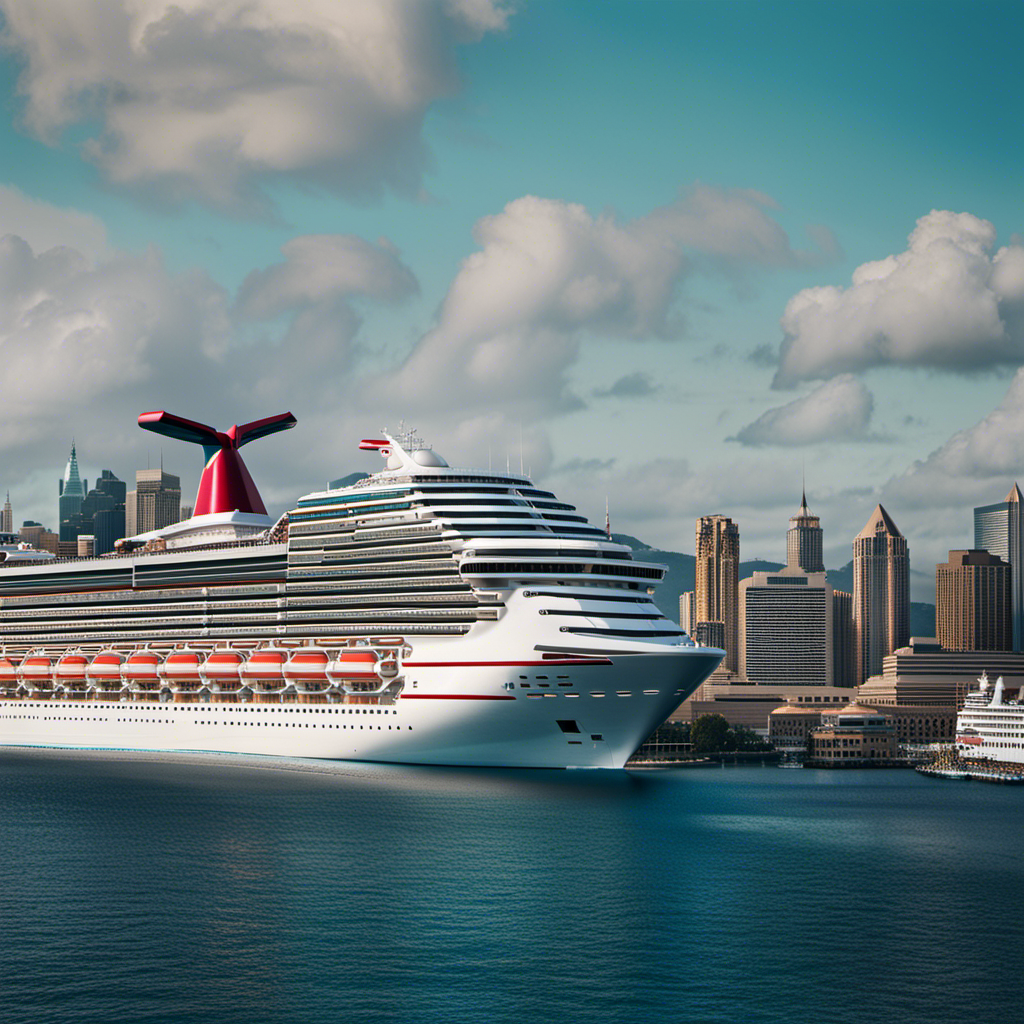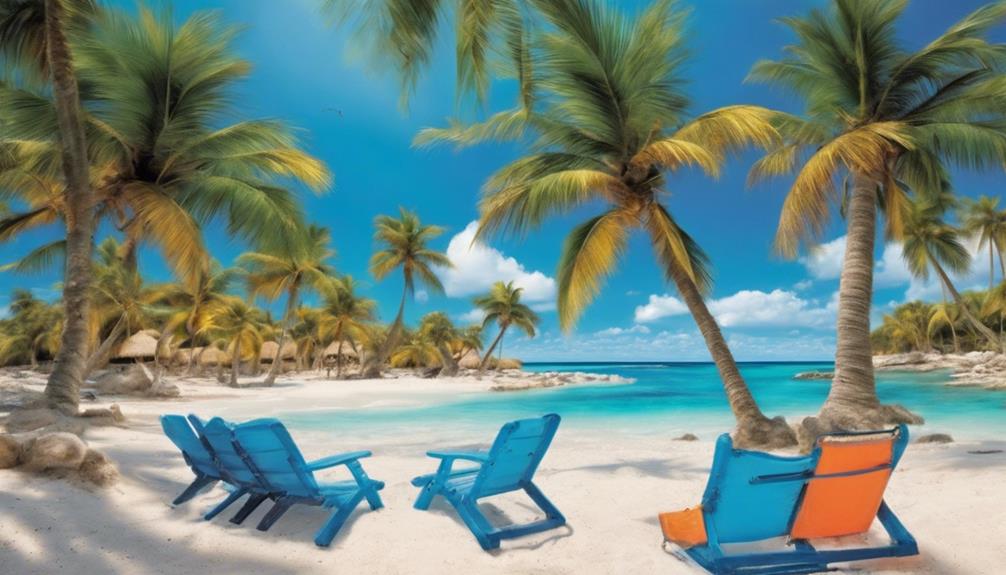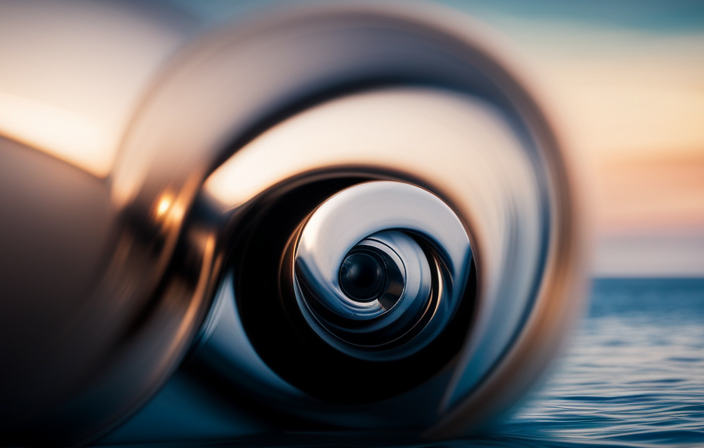As a person who is highly interested in both travel and the historical elements of maritime expeditions, I frequently encounter inquiries about the differences between ocean liners and cruise ships. It is important to clarify from the beginning that, despite their similar appearances, each type of ship serves a unique purpose and provides a different experience for those on board.
Ocean liners, historically, were designed for long-distance travel, connecting continents and carrying passengers and cargo across the seas. They were built with speed, efficiency, and stability in mind.
On the other hand, cruise ships are primarily focused on providing a luxurious vacation experience, offering a wide range of amenities and activities onboard.
In this article, we will delve into the historical background, design differences, onboard facilities, and other factors that set these two types of vessels apart. By exploring their purposes, functionalities, and future trends, we will gain a deeper understanding of the unique qualities that make ocean liners and cruise ships stand out in the world of maritime travel.
Key Takeaways
- Ocean liners have class distinctions with opulent suites and elegant accommodations, while cruise ships cater to a more diverse demographic of passengers.
- Ocean liners have a higher staff-to-passenger ratio and specialized staff trained in navigation, maintenance, and customer service, whereas cruise ships have a wider range of staff working in entertainment, housekeeping, and food service departments.
- Ocean liners offer a more immersive and luxurious experience with higher ticket prices, while cruise ships cater to a wider range of budgets and preferences.
- Ocean liners stimulate local economies in port cities, while cruise ships invest in advanced waste treatment systems for responsible waste management and reduced environmental footprint.
Historical Background of Ocean Liners and Cruise Ships
Did you know that understanding the historical background of ocean liners and cruise ships will give you a whole new appreciation for these magnificent vessels?
The evolution of ocean liners can be traced back to the early 19th century when steam-powered ships first started crossing the Atlantic. These early liners were primarily used for transportation, connecting continents and facilitating trade.
As technology advanced, ocean liners became larger, faster, and more luxurious. The purpose of ocean liners shifted from simply transporting people and goods to providing a luxurious and comfortable travel experience.
With the introduction of cruise ships in the mid-20th century, the focus shifted from transportation to leisure and entertainment. Cruise ships were designed to offer a wide range of amenities and activities, catering to the needs and desires of vacationers.
This transition in purpose and function marked a new era in the world of maritime travel.
Purpose and Function of Ocean Liners
Ocean liners serve a distinct purpose and offer unique functions that go beyond what’s typically expected from a ship on a leisurely cruise. These majestic vessels were designed to transport passengers across the world’s oceans in style, comfort, and luxury.
Here are three key aspects that highlight their class distinctions and economic impact:
-
Social Hierarchy: Ocean liners embodied a clear class structure, with first-class passengers enjoying opulent accommodations, fine dining, and exclusive amenities, while those in lower classes had more modest accommodations and limited access to certain areas of the ship.
-
Economic Boost: The construction and operation of ocean liners created significant economic opportunities, providing jobs to thousands of workers in shipyards, hotels, restaurants, and other related industries. Additionally, the influx of wealthy passengers and tourists contributed to the local economies of port cities.
-
Global Connectivity: Ocean liners played a crucial role in connecting distant continents, facilitating trade, immigration, and cultural exchange. These grand vessels became symbols of national pride and technological progress, showcasing a nation’s maritime power and prowess.
As we delve into the purpose and function of cruise ships, it’s evident that they’ve evolved from the legacy of ocean liners, incorporating elements of leisure and entertainment into their design and operations.
Purpose and Function of Cruise Ships
When you step aboard a cruise ship, you’ll be amazed to learn that these floating resorts generate an astonishing $45.6 billion in revenue annually. Cruise ships are designed to provide passengers with a luxurious vacation experience, offering a wide range of amenities and activities. They cater to a diverse range of passenger demographics, from families with children to older adults seeking relaxation. These ships have a significant economic impact, not only through their revenue generation but also through the employment opportunities they create in the tourism industry. To give you a visual representation, imagine a four-row, two-column table. On one side, you have families enjoying poolside activities and kids playing in the supervised children’s area. On the other side, you have adults indulging in spa treatments and fine dining. This diversity of offerings ensures that cruise ships appeal to a wide audience. As we move into the next section about the design and architecture differences, you’ll see how these features are reflected in the physical aspects of ocean liners and cruise ships.
Design and Architecture Differences
When it comes to design and architecture, two key points to consider are the size and capacity, as well as the structural strength and stability of cruise ships.
Cruise ships come in various sizes, with some being able to accommodate thousands of passengers and crew members.
Additionally, their design must take into account the need for structural strength and stability to ensure the safety and comfort of everyone on board, especially during rough sea conditions.
Size and Capacity
If you’re looking for a ship that can hold thousands of passengers and boasts luxurious amenities, then a cruise ship is the perfect choice for you. Cruise ships are known for their impressive size and passenger capacity.
Here are some key differences in size and capacity between ocean liners and cruise ships:
-
Cruise ships can carry anywhere from a few hundred to over 6,000 passengers, depending on their size and layout. They are designed to maximize space and provide various entertainment options, such as pools, theaters, and restaurants. Cruise ships come in different classes, with larger ones offering more amenities and activities.
-
Ocean liners, on the other hand, are typically smaller and have a more limited passenger capacity, focusing more on providing a luxurious and elegant experience. Ocean liners are built to withstand rough sea conditions and maintain stability, while cruise ships prioritize comfort and entertainment.
With a clear understanding of the size and capacity differences, let’s now delve into the next section about the structural strength and stability of these ships.
Structural Strength and Stability
With their impressive size and capacity, it’s fascinating to explore the structural strength and stability of these magnificent vessels.
Ocean liners and cruise ships are marvels of engineering, designed to withstand the forces of the ocean and provide a smooth and safe journey for passengers. These ships are built with reinforced hulls and advanced stabilizer systems to ensure stability even in rough seas. Passenger safety is a top priority, with stringent regulations and safety measures in place.
Additionally, these ships are designed to minimize their environmental impact, with advanced waste management systems and energy-efficient technologies.
As we delve into the next section about onboard amenities and facilities, it’s important to note how these intricate structures provide a solid foundation for a luxurious and enjoyable experience at sea.
Onboard Amenities and Facilities
Explore the vast array of luxurious amenities and state-of-the-art facilities available onboard, allowing you to indulge in a truly opulent experience on an ocean liner or a cruise ship. Both types of vessels offer a multitude of onboard entertainment options to keep guests entertained throughout their journey. From Broadway-style shows and live performances to casinos and nightclubs, there is something for everyone to enjoy. Additionally, the dining options onboard are exquisite, with a variety of restaurants serving gourmet cuisine prepared by world-class chefs. Whether you prefer fine dining or casual buffets, the culinary offerings are sure to satisfy even the most discerning palate. To further illustrate the differences in amenities between an ocean liner and a cruise ship, refer to the table below:
| Ocean Liner | Cruise Ship |
|---|---|
Now, let’s delve into the next section about itinerary and routes, where we will explore the different destinations these magnificent vessels can take you.
Itinerary and Routes
Embark on a thrilling voyage as you discover the diverse and captivating destinations that these magnificent vessels can take you to. Itinerary planning and navigation routes are crucial aspects of both ocean liners and cruise ships.
These majestic ships are designed to transport passengers to a variety of destinations, ranging from tropical paradises to historic cities. The itineraries are carefully planned to offer a balanced mix of cultural experiences, natural wonders, and leisure activities.
From the turquoise waters of the Caribbean to the breathtaking fjords of Norway, these ships navigate through some of the world’s most picturesque routes. Passengers can witness stunning landscapes and iconic landmarks as they sail from one port to another.
As we move on to the next section about passengers and travel experience, let’s delve into the incredible amenities and services that await on board these extraordinary vessels.
Passengers and Travel Experience
When it comes to ocean liners, class distinctions play a significant role in determining the overall travel experience. From opulent suites for the elite to more modest accommodations for the working class, ocean liners cater to a wide range of passengers with varying levels of luxury and comfort.
In contrast, cruise ships attract a diverse demographic of passengers, with families, couples, and solo travelers all seeking a memorable vacation experience. The inclusive nature of cruise ships allows for a melting pot of cultures, backgrounds, and interests, creating a vibrant and dynamic atmosphere on board.
Class Distinctions on Ocean Liners
Experience the opulent luxury of ocean liners through their class distinctions, transporting you to a bygone era of elegance and refinement. On these majestic vessels, class distinctions were clearly defined, creating a social hierarchy among passengers. To give you a glimpse into this world, let me paint a picture of the class distinctions on ocean liners:
-
First Class: Reserved for the elite, first-class passengers enjoyed spacious cabins, exquisite dining experiences, and exclusive access to luxurious amenities.
-
Second Class: Catering to affluent travelers, second-class accommodations were still elegant, offering comfortable cabins and fine dining options.
-
Third Class: Mostly comprised of immigrants seeking a better life, third-class passengers had more modest accommodations and communal dining areas.
These class distinctions on ocean liners reflect the diverse passenger demographics of the time. Now, let’s explore the subsequent section about the diverse passenger demographics on cruise ships.
Diverse Passenger Demographics on Cruise Ships
Passenger demographics on cruise ships are incredibly diverse, reflecting a wide range of backgrounds and cultures. Cruise ships attract travelers from all over the world, with varying preferences and interests. Some passengers seek relaxation and luxury, while others are more interested in adventure and exploration. This diversity is evident in the onboard activities and amenities offered, with options ranging from spa treatments and gourmet dining to rock climbing and zip-lining. To illustrate the cultural diversity found on cruise ships, consider the following table:
| Nationality | Percentage | Popular Activities |
|---|---|---|
| American | 40% | Pool lounging, Broadway shows |
| British | 20% | Afternoon tea, pub quizzes |
| Chinese | 15% | Karaoke, traditional Chinese cuisine |
The table demonstrates how passenger preferences and cultural backgrounds influence the activities and experiences onboard. Moving forward, it is important to explore the crew and staffing dynamics, as they play a crucial role in ensuring a smooth sailing experience for all passengers.
Crew and Staffing
Contrary to popular belief, the key distinction between an ocean liner and a cruise ship lies in the crew and staffing, which ultimately determines the level of service and attention to detail throughout the voyage. Here are three key aspects that highlight the differences:
-
Skillsets: Ocean liners typically employ highly trained staff that specialize in specific areas such as navigation, maintenance, and customer service. Cruise ships, on the other hand, have a more diverse staff, with crew members working in various departments like entertainment, housekeeping, and food service.
-
Size of Crew: Ocean liners generally have a larger crew compared to cruise ships due to their larger size and the need for specialized personnel. This allows for a higher staff-to-passenger ratio, resulting in more personalized service.
-
Training and Experience: Ocean liner crew members often undergo extensive training to handle emergencies and ensure passenger safety during long transoceanic journeys. Cruise ship staff receives training as well, but it tends to focus more on providing a memorable vacation experience for a diverse range of passengers.
Understanding these differences helps to appreciate the distinct experiences offered by ocean liners and cruise ships. Moving into the subsequent section about ‘economic and commercial factors,’ we can explore how these aspects influence the industry’s dynamics.
Economic and Commercial Factors
With their larger crew and specialized staff, ocean liners create a more immersive and luxurious environment throughout the voyage. This level of service comes at a higher cost, which is reflected in the ticket prices.
However, the economic impact of ocean liners goes beyond the ticket sales. These vessels require a significant amount of resources and infrastructure to operate, stimulating local economies in port cities.
Moreover, the market demand for ocean liners has remained strong over the years, with travelers seeking a premium and traditional cruising experience.
Cruise ships, on the other hand, cater to a wider range of budgets and preferences, offering a variety of onboard amenities and activities. As a result, they have a broader market appeal and can attract a larger number of passengers.
Looking ahead, future trends and developments in the industry will continue to shape the landscape of both ocean liners and cruise ships, ensuring their relevance and competitiveness in the market.
Future Trends and Developments
Looking ahead, you’ll see a convergence of innovative technology and sustainable practices shaping the future of sea travel. The cruise industry is making significant strides towards future sustainability, driven by a growing awareness of environmental concerns and passenger demands for greener options.
Here are three key trends and developments to watch out for:
-
Energy Efficiency: Cruise ships are increasingly adopting advanced propulsion systems, such as LNG engines and electric propulsion, to reduce emissions and improve fuel efficiency. These technologies not only minimize the environmental impact but also enhance operational efficiency.
-
Waste Management: With a focus on responsible waste management, cruise lines are investing in advanced onboard waste treatment systems. These systems enable the efficient processing of waste, including recycling and energy recovery, reducing the overall environmental footprint.
-
Digitalization and Automation: The future of sea travel will witness the integration of digital technologies and automation for enhanced operational efficiency. From smart monitoring systems to optimize energy consumption to automated processes for passenger services, emerging technologies will revolutionize the cruise industry.
As the industry embraces these future trends and developments, the future of sea travel looks promising, combining sustainability and innovation to create unforgettable experiences for passengers.
Frequently Asked Questions
How have ocean liners and cruise ships evolved over time in terms of design and architecture?
Over time, ocean liners and cruise ships have evolved in terms of design and architecture. The evolution of ocean liners has seen significant changes in size, speed, and luxury. Cruise ships have undergone architectural changes to accommodate various amenities and entertainment options for passengers.
What are some unique amenities and facilities offered on ocean liners and cruise ships?
On ocean liners and cruise ships, you can find a wide range of unique amenities and facilities. These include luxurious spas, multiple dining options, swimming pools, theaters, casinos, sports facilities, and even water parks.
How do the itineraries and routes of ocean liners differ from those of cruise ships?
Ocean liners and cruise ships have different itineraries and routes. Ocean liners often focus on transoceanic journeys, while cruise ships offer shorter, more destination-focused trips. This distinction allows ocean liners to explore more remote and exotic ports, providing a unique travel experience.
What is the typical passenger experience like on an ocean liner versus a cruise ship?
Passenger demographics on an ocean liner tend to be more varied, with a mix of ages and nationalities. Onboard entertainment includes a range of activities and shows, appealing to a diverse group of passengers.
What are the economic and commercial factors that differentiate ocean liners from cruise ships?
Economic factors, such as operational costs and profitability, shape the distinction between ocean liners and cruise ships. Commercial factors, like target demographics and market positioning, further differentiate these vessels in the maritime industry.
Conclusion
In conclusion, the difference between an ocean liner and a cruise ship is like comparing a majestic swan to a lively party boat.
Ocean liners, with their rich history and purposeful design, evoke a sense of elegance and nostalgia.
On the other hand, cruise ships are all about creating a fun and entertaining experience for passengers. From the stunning architecture to the variety of onboard amenities, each vessel serves a unique function.
As we sail into the future, it’ll be fascinating to see how these two worlds continue to evolve and captivate travelers.
Meet Asra, a talented and adventurous writer who infuses her passion for exploration into every word she writes. Asra’s love for storytelling and her insatiable curiosity about the world make her an invaluable asset to the Voyager Info team.
From a young age, Asra was drawn to the power of words and their ability to transport readers to far-off lands and magical realms. Her fascination with travel and cultures from around the globe fueled her desire to become a travel writer, and she set out on a journey to turn her dreams into reality.

